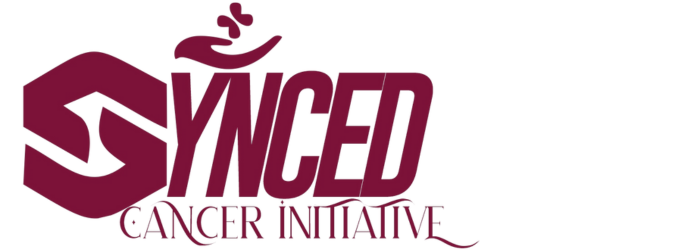When you notice pain, swelling, or redness in your breast, do not think it is breast cancer. The fear is natural because breast cancer is a serious condition that many Nigerian women worry about. However, not every breast change means cancer. Sometimes, what you are experiencing could be mastitis, a prevalent and treatable condition. Understanding the difference between mastitis and breast cancer will help you make informed decisions, reduce anxiety, and take the proper steps to protect your health.
What is Mastitis?
Mastitis means inflammation of the breast. This inflammation can sometimes involve an infection, and it can cause pain, swelling, warmth, and redness in the breast. Many women believe mastitis only happens during breastfeeding, but the truth is, it can occur even in women who are not breastfeeding. The condition is not life-threatening in most cases, but it can be uncomfortable and distressing if not treated on time. Unlike breast cancer, which is a long-term disease that may require surgery, chemotherapy, or radiation, mastitis usually resolves with medical treatment and self-care.
Types of Mastitis
- Lactational Mastitis: This is the most common type. It usually happens in breastfeeding women when milk ducts get blocked, or bacteria from cracked nipples enter the breast. The trapped milk can cause swelling and pain, leading to infection.
- Periductal Mastitis: This type is not related to breastfeeding. It is caused by inflammation in the milk ducts near the nipple. Women who smoke or are in their reproductive years are more at risk of this condition.
- Granulomatous Mastitis: This rare type usually occurs within five years after childbirth. It can sometimes look like breast cancer because it causes lumps and swelling, but it is not cancer.
Causes and Risk Factors of Mastitis
- Breastfeeding-related causes: Cracked nipples, poor latching of the baby, or oversupply of milk can block ducts and lead to mastitis.
- Lifestyle factors: Smoking, poor hygiene, wearing very tight bras, and stress increase your risk.
- Health conditions: Women with diabetes, weak immunity, or a history of mastitis may face repeated episodes.
In Nigeria, cultural practices such as not seeking help early, using home remedies without medical advice, or poor breastfeeding support can worsen mastitis.
Symptoms and Differences of Mastitis from Breast Cancer
Mastitis symptoms include breast pain and swelling, redness and warmth on the skin, fever or flu-like symptoms (body ache, chills, tiredness), nipple discharge (sometimes pus), and formation of an abscess (pocket of pus) if untreated.
Breast cancer often presents as a hard, painless lump that does not go away. Skin may look like orange peel (dimpling). The nipple may change shape, retract, or have bloody discharge. Symptoms do not improve with antibiotics or home care. If your symptoms improve after medical treatment, it is likely mastitis. But if they persist or worsen, consult your doctor to rule out breast cancer.
Diagnosis and When to See a doctor
You should never ignore changes in your breasts. Mastitis is usually diagnosed through a physical examination. If your doctor suspects something more serious, an Ultrasound to check for abscesses, a Mammogram, or a Biopsy to rule out breast cancer could be done, if symptoms persist.
Treatment Options for Mastitis
- Medical Treatment: like antibiotics to clear the infection or pain relievers such as paracetamol or ibuprofen to reduce pain and fever. If an abscess forms, your doctor may need to drain it.
- Home Care Remedies: apply warm compresses on the breast or gently massage the breast to relieve blocked ducts. Rest, stay hydrated, and continue breastfeeding or pumping to empty the breast.
Breastfeeding with Mastitis
Many Nigerian women stop breastfeeding when they develop mastitis because they fear harming their baby. The truth is, in most cases, it is safe to continue breastfeeding. In fact, emptying the breast helps recovery. However, always follow your doctor’s advice.
Prevention Tips You Should Know
If breastfeeding, ensure your baby latches properly or alternate breasts during feeding to avoid engorgement. Avoid very tight bras that put pressure on your breasts and maintain proper hygiene, especially when breastfeeding. Eat balanced meals and stay hydrated to strengthen your immunity and reduce stress by resting whenever possible.
Mastitis is common, manageable, and treatable. But ignoring your symptoms can delay healing. Take charge of your breast health and act quickly when you notice any changes. Remember, not every breast lump or pain is cancer, so do not panic. Avoid hiding your symptoms or depending on home remedies. Early treatment protects your health and gives you peace of mind.
Breast cancer, on the other hand, requires long-term treatment and monitoring. This is why regular check-ups and timely medical attention are so important. Caring for your breasts today could protect your life tomorrow.
References
Roswell Park – roswellpark.org/cancertalk/202303/mastitis-or-breast-cancer-know-difference
Accessed 17th August, 2025
WebMD – webmd.com/women/breast-infection
Accessed 17th August, 2025
Fight 4 the Tatas – fighting4thetatas.org/ibc-vs-breast-infection
Accessed 17th August, 2025











What do you think?
It is nice to know your opinion. Leave a comment.